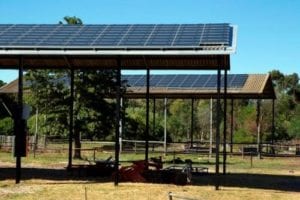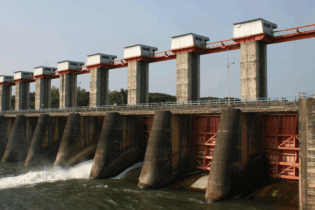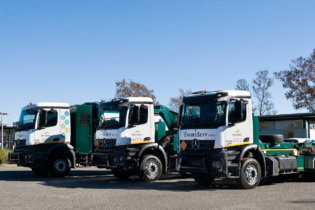Environmental scientists from the Council for Scientific and Industrial Research (CSIR) are making progress in their search for the best parts of South Africa for new wind and solar PV energy projects. The CSIR was commissioned by the Department of Environmental Affairs (DEA) to identify the new renewable energy development zones (REDZs) where large-scale renewable energy projects can be rolled out under a streamlined environmental authorisation process.
This project is the first strategic study aiming at unlocking large areas of South Africa for wind and solar PV development. The REDZs are being selected to yield the highest possible socio-economic benefits with the lowest environmental impacts. “The current scattered and uncertain nature of wind and solar PV development applications across SA does not allow for strategic and proactive infrastructure investment,” says CSIR environmental scientist Lydia Cape-Ducluzeau. “The identification of these areas will enable proactive investment in infrastructure, especially development of the electrical grid, and reduce development timeframes and costs in renewable energy.” The CSIR team is running the Strategic Environmental Assessment (SEA) on behalf of the DEA in support of the Presidential Infrastructure Coordinating Commission (PICC) Strategic Integrated Project 8 (SIP8), which is the promotion of green energy in support of the South African economy. The CSIR SEA team has identified eight focus areas spanning a total of 78 000 km2 the Northern Cape, Eastern Cape, North-West, Western Cape and Free State. This is where preliminary assessments have shown the highest potential for development of large clusters of wind and solar PV energy facilities.“Each focus area is currently being evaluated by specialist teams looking at socio-economic, biodiversity, agriculture, landscape, and heritage factors, with scoping level sensitivity mapping for wind and solar PV developments for each area. The specialist teams are expected to report their findings by July,” says Cape-Ducluzeau.
By the end of 2014, the final boundaries of the REDZs will be released with their respective development protocols. The SEA project started at the end of 2012 and concludes at the end of 2014 when the REDZs will be taken by the DEA to Cabinet for approval. The SEA process is guided by a steering committee featuring provincial authorities, government departments responsible for energy, mineral resources, water, agriculture, communities, public entities, defence and the economy; as well as the Presidential Infrastructure Coordinating Commission and the South African Local Government Association. An expert reference group is meeting regularly to discuss the technical results and progress of the SEA, with participants including Eskom, the SA Photovoltaic Industry Association, SA Wind Energy Association, SA National Biodiversity Institute, the Civil Aviation Authority, Air Traffic Navigational Services, Council for Geosciences, Birdlife SA, the SA Bat Assessment Advisory panel, Sentech, SA National Energy Development Institute, SA National Roads Agency, SA Heritage Resources Agency and the Industrial Development Corporation.







